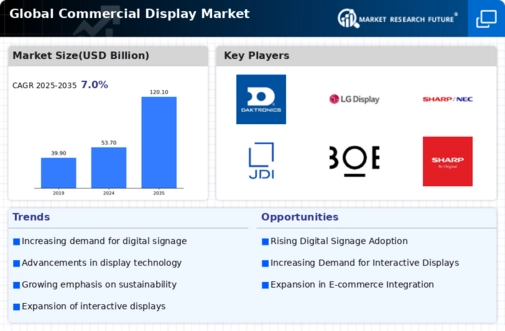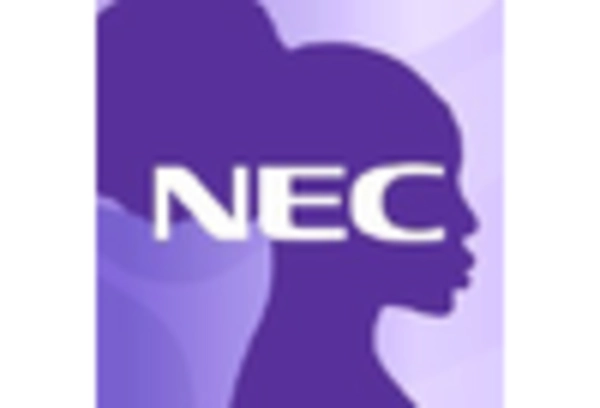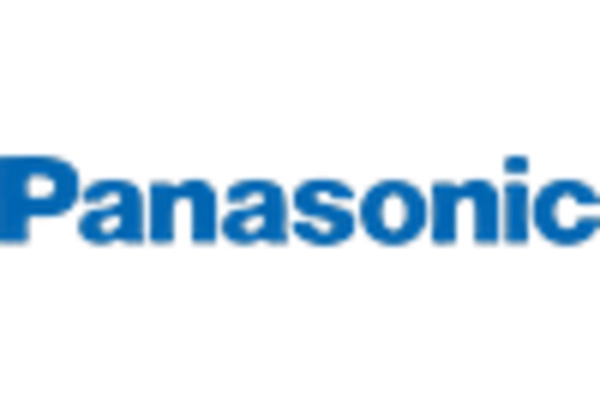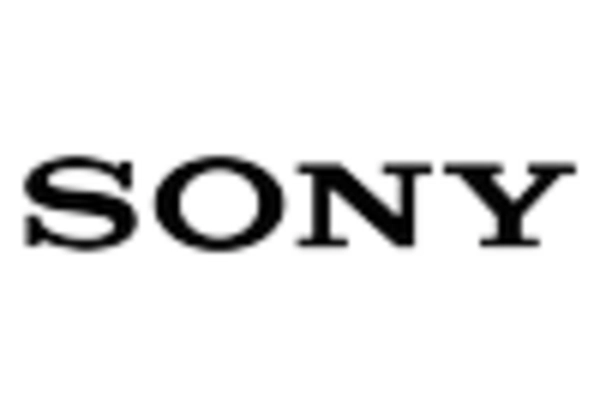Advancements in Display Technology
Technological advancements play a pivotal role in shaping the Commercial Display Market. Innovations such as OLED, MicroLED, and 4K resolution displays are revolutionizing the way visual content is presented. These technologies offer superior image quality, energy efficiency, and thinner form factors, making them increasingly appealing to businesses. For instance, the adoption of OLED displays is expected to rise significantly, as they provide vibrant colors and deeper blacks, enhancing the overall viewing experience. Furthermore, the integration of augmented reality (AR) and virtual reality (VR) into commercial displays is anticipated to create immersive experiences for consumers. As these technologies continue to evolve, they are likely to drive growth and transformation within the Commercial Display Market.
Rising Focus on Customer Experience
A rising focus on customer experience is reshaping the Commercial Display Market. Businesses recognize that enhancing customer interactions can lead to increased loyalty and sales. As a result, many are investing in interactive displays that allow customers to engage with products and services in novel ways. For example, touch-screen kiosks and interactive product displays are becoming commonplace in retail environments. Research suggests that companies that prioritize customer experience can see revenue increases of up to 10%. This trend underscores the importance of integrating advanced display technologies into customer-facing environments, thereby driving growth within the Commercial Display Market.
Increasing Demand for Digital Signage
The Commercial Display Market experiences a notable surge in demand for digital signage solutions. Businesses across various sectors, including retail, hospitality, and transportation, increasingly adopt digital displays to enhance customer engagement and streamline communication. According to recent data, the digital signage segment is projected to grow at a compound annual growth rate of approximately 8.5% over the next five years. This growth is driven by the need for dynamic content delivery and the ability to update information in real-time, which traditional static displays cannot provide. As companies seek to differentiate themselves in competitive markets, the integration of digital signage into their marketing strategies becomes essential, thereby propelling the Commercial Display Market forward.
Government Initiatives and Regulations
Government initiatives and regulations are increasingly impacting the Commercial Display Market. Many governments are promoting the use of digital displays for public information dissemination, particularly in transportation and public safety sectors. For instance, regulations mandating the use of electronic billboards in urban areas are becoming more common, as they are seen as effective tools for communication. Additionally, initiatives aimed at reducing energy consumption are encouraging businesses to adopt energy-efficient display technologies. As these regulations evolve, they are likely to create new opportunities for growth within the Commercial Display Market, as companies adapt to meet compliance requirements while enhancing their display capabilities.
Expansion of Retail and Advertising Sectors
The expansion of the retail and advertising sectors significantly influences the Commercial Display Market. As retailers seek innovative ways to attract customers, the use of eye-catching displays becomes increasingly prevalent. The advertising sector, too, is leveraging commercial displays to create impactful campaigns that resonate with audiences. Recent statistics indicate that the retail sector is expected to grow by 4% annually, leading to increased investments in commercial display solutions. This trend is particularly evident in urban areas, where competition is fierce, and businesses must utilize every tool at their disposal to capture consumer attention. Consequently, the growth of these sectors is likely to bolster the demand for advanced commercial display technologies.
















Leave a Comment